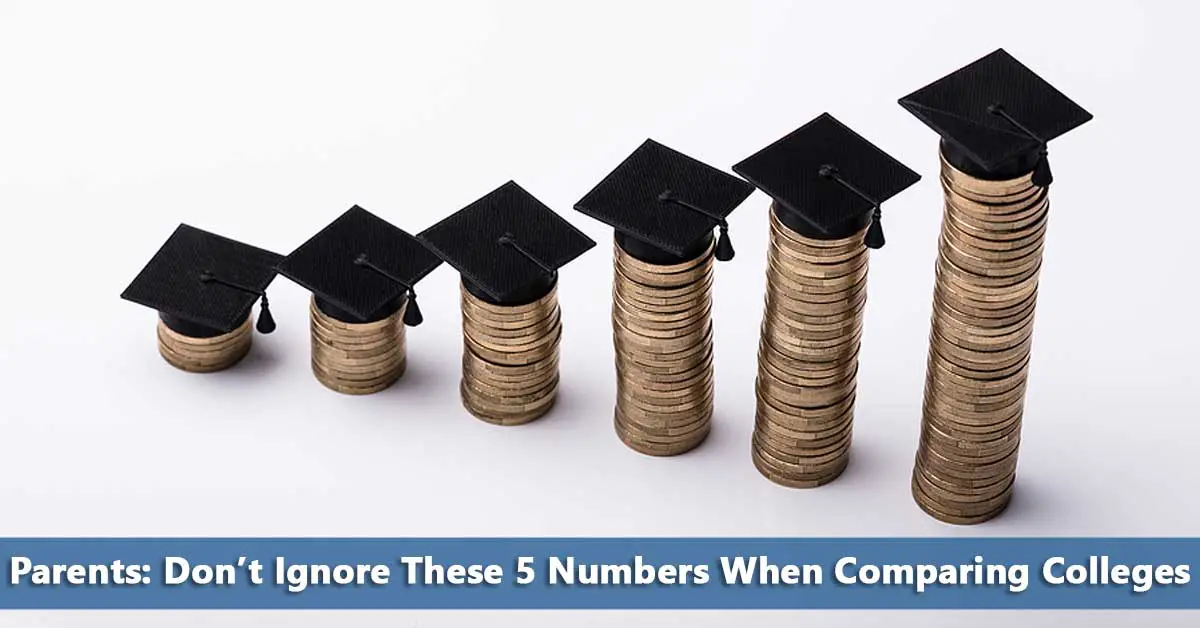 Too many people think that your Expected Family Contribution (EFC) is something that you worry about when you apply for financial aid–if they have heard the term at all. And if you’re a family with high school students thinking about college, it’s definitely a term you should become familiar with immediately. Why? Because what you don’t know about your EFC, which will be called the Student Aid Index (SAI) starting for 2023 (for the 23-24 academic year), can hurt you long before you even start to fill-out college application forms.
Too many people think that your Expected Family Contribution (EFC) is something that you worry about when you apply for financial aid–if they have heard the term at all. And if you’re a family with high school students thinking about college, it’s definitely a term you should become familiar with immediately. Why? Because what you don’t know about your EFC, which will be called the Student Aid Index (SAI) starting for 2023 (for the 23-24 academic year), can hurt you long before you even start to fill-out college application forms.
EFC
4 Reasons People Don’t Pick Affordable Colleges
 There are over 1,600 four-year public and private colleges in the United States. And guess what, they don’t all cost an arm and a leg to attend. With this many colleges, there have to be quality, affordable options available for families who look for them. And there are students attending college without facing the prospect of years of debilitating debt. Yet, attending affordable colleges comes with some trade-offs that not all families are willing to make.
There are over 1,600 four-year public and private colleges in the United States. And guess what, they don’t all cost an arm and a leg to attend. With this many colleges, there have to be quality, affordable options available for families who look for them. And there are students attending college without facing the prospect of years of debilitating debt. Yet, attending affordable colleges comes with some trade-offs that not all families are willing to make.
Parents: Don’t Ignore These 5 Numbers when Comparing Colleges
 Before parents sit back and let their kids drive the college application process, there are some numbers they need to understand when comparing colleges. Because while it’s true that it’s the student who is going to attend college, the colleges are pretty clear that they are going to turn to the parents to pay the bill. And anyone expected to write a check to cover the cost of college, needs to have some meaningful numbers to evaluate the value of what their buying. However, not all numbers are created equal. For example, the acceleration speed of a car and its sticker price are both numbers, but one probably will have priority over the other for most people making a car purchase. Understanding these five numbers will provide you with some basic references for comparing colleges to decide if you’re willing to pay the college’s asking price.
Before parents sit back and let their kids drive the college application process, there are some numbers they need to understand when comparing colleges. Because while it’s true that it’s the student who is going to attend college, the colleges are pretty clear that they are going to turn to the parents to pay the bill. And anyone expected to write a check to cover the cost of college, needs to have some meaningful numbers to evaluate the value of what their buying. However, not all numbers are created equal. For example, the acceleration speed of a car and its sticker price are both numbers, but one probably will have priority over the other for most people making a car purchase. Understanding these five numbers will provide you with some basic references for comparing colleges to decide if you’re willing to pay the college’s asking price.
8 Things Parents Paying for College Must Know
 When my son was small and I would tell him to do something, he would ask why and I would tell him because “it’s in the parent’s manual.” He got really curious about that manual. Where was it? (I wasn’t allowed to tell him.) When did we get it? (At the hospital, of course, you don’t think they would let us leave without it?) Was there a kid’s manual? (You mean you lost yours?)
When my son was small and I would tell him to do something, he would ask why and I would tell him because “it’s in the parent’s manual.” He got really curious about that manual. Where was it? (I wasn’t allowed to tell him.) When did we get it? (At the hospital, of course, you don’t think they would let us leave without it?) Was there a kid’s manual? (You mean you lost yours?)
Net Price Calculators: 8 Things You Must Know
 When students start creating their college list, smart families make sure they use the Net Price Calculator on all possibilities before adding them to the final list. Net Price Calculators (NPC) provide families with the estimated price they will pay after deducting for gift aid. This is called the average net price. Essentially, NPCs provide the average paid by students with similar financial backgrounds excluding loans and work-study. They have only been around since 2011 and can be a valuable tool for families targeting colleges generous with financial aid. However, they aren’t perfect and anyone who uses NPCs need to keep the following in mind:
When students start creating their college list, smart families make sure they use the Net Price Calculator on all possibilities before adding them to the final list. Net Price Calculators (NPC) provide families with the estimated price they will pay after deducting for gift aid. This is called the average net price. Essentially, NPCs provide the average paid by students with similar financial backgrounds excluding loans and work-study. They have only been around since 2011 and can be a valuable tool for families targeting colleges generous with financial aid. However, they aren’t perfect and anyone who uses NPCs need to keep the following in mind:
Largest College Endowments by State
 Everyone wants to know if colleges are going to open next fall. Or rather if they are going to open for in-person classes since by now the colleges have demonstrated their ability to conduct virtual classes. Of course, if they are mandated to remain shut-down, it’s not a question they have to answer. But otherwise, there are a lot of reasons why colleges will be welcoming students on campus for classes coming this fall and they pretty much all come down to money.
Everyone wants to know if colleges are going to open next fall. Or rather if they are going to open for in-person classes since by now the colleges have demonstrated their ability to conduct virtual classes. Of course, if they are mandated to remain shut-down, it’s not a question they have to answer. But otherwise, there are a lot of reasons why colleges will be welcoming students on campus for classes coming this fall and they pretty much all come down to money.
Should You Pay Someone to Complete the FAFSA?
 (Updated Dec 2018) In July of 2015, the United States government finally gained control of the FAFSA.com website. Until then, the website was owned and operated by Student Financial Aid Service, Inc. which charged students to complete the Free Application for Federal Student Aid (FAFSA). Over the years, FAFSA.com became the poster child for financial aid scams designed to take advantage students and families trying to get financial aid for college. So does its demise represent the final statement of whether or not students should pay for a private financial aid consultant to complete the FAFSA?
(Updated Dec 2018) In July of 2015, the United States government finally gained control of the FAFSA.com website. Until then, the website was owned and operated by Student Financial Aid Service, Inc. which charged students to complete the Free Application for Federal Student Aid (FAFSA). Over the years, FAFSA.com became the poster child for financial aid scams designed to take advantage students and families trying to get financial aid for college. So does its demise represent the final statement of whether or not students should pay for a private financial aid consultant to complete the FAFSA?
The Must Read Chart for all Parents Thinking about Paying for College
 For the past few years, Troy Onink has had a Guide To FAFSA, CSS Profile, College Financial Aid And Expected Family Contribution at Forbes Magazine. It’s a great article that explains critical elements of the college financial aid process. I think the most valuable part of the guide is the Federal EFC Quick Reference Table. (Click here for an updated version of the EFC Chart with assets.)
For the past few years, Troy Onink has had a Guide To FAFSA, CSS Profile, College Financial Aid And Expected Family Contribution at Forbes Magazine. It’s a great article that explains critical elements of the college financial aid process. I think the most valuable part of the guide is the Federal EFC Quick Reference Table. (Click here for an updated version of the EFC Chart with assets.)
3 Hard Truths About Who Gets Financial Aid
 What’s the worst possible thing families could hear after getting their Estimate Family Contribution (EFC) for financial aid? How about that even if they could manage to pay their EFC, more than likely they’ll have to pay even more because most colleges won’t meet their full need. The data on who gets financial aid shows that most families aren’t going to have their need met.
What’s the worst possible thing families could hear after getting their Estimate Family Contribution (EFC) for financial aid? How about that even if they could manage to pay their EFC, more than likely they’ll have to pay even more because most colleges won’t meet their full need. The data on who gets financial aid shows that most families aren’t going to have their need met.









